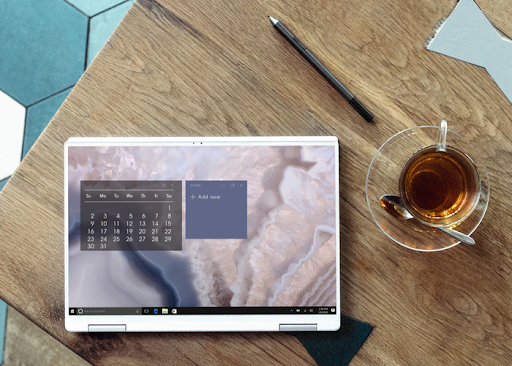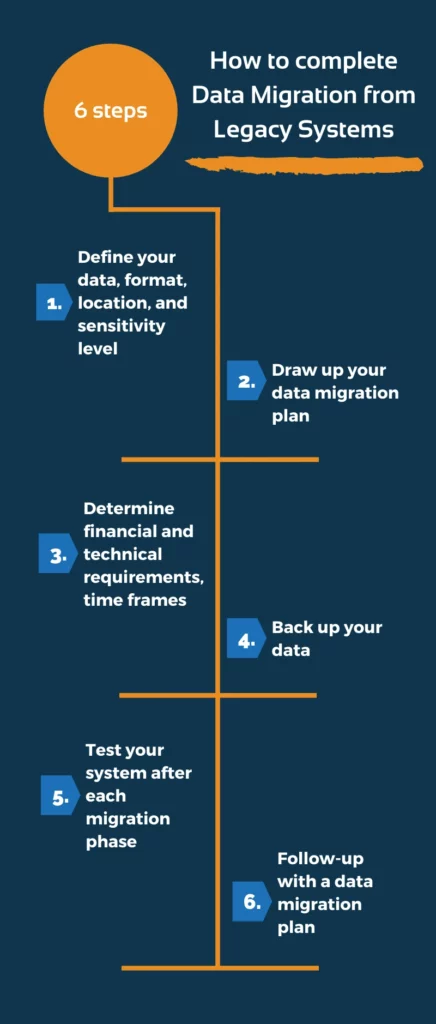What is a legacy system migration and how it can boost your productivity


Sooner or later, each company searches for efficient low-code solutions aimed at improving the existing system. And because of numerous programming products available in the IT market, it’s easier said than done. In this post, we’ll dwell on the migrating challenges and significant steps to completing data migration. But first, let’s start by clarifying the concept.
What does Legacy Migration mean?
Simply put, the term includes outdated IT system modernization to a newer software platform or hardware infrastructure. In fairness, legacy systems can satisfy the requirements they were created for. However, these solutions are incompatible with breakthrough technologies and have insufficient performance. The lack of updates as well as inadequate vendor support result in data security hazards. Legacy migration projects are divided into 2 types:
The first type of migration project allows enterprises to rebuild the existing solution on a one-to-one basis. It means that you keep up tackling tasks you’ve been working on. There’s no need in making functionality changes in that case.
Quite the opposite, business transformation systems replace legacy systems when they fail to support business processes and ensure a comprehensive user experience. You can add an advanced set of functions that help to scale up your business and optimize the workflow.
Two categories of business transformation initiatives are worthy to note:
We hope our types of legacy migration projects overview will assist you in putting the whole puzzle together. And now let’s consider migration challenges in more detail.

Your system should adapt to changes promptly. Otherwise, it will soon become tomorrow’s legacy.
Low-code solutions allow companies to use a modern app architecture that is agile thanks to leveraging microservices. Choose a platform with numerous autonomous services and apps you can share or recombine promptly. Creating unmaintainable piles and applications of machine-generated code is the last thing you need to do. A future-proof platform remains a key to achieving a high flexibility level and meeting your business needs.
Mission-critical applications fail to deliver appropriate performance requirements when it comes to scaling. It’s worthwhile to select a low-code platform that enables new solution deployment with high availability and resiliency level. If your platform has cloud-native architecture, you shouldn’t worry about performance issues.
If you’re determined to enhance long-term maintainability, focus on monitoring and addressing shortcomings daily. A Low-code platform consisting of automated quality, testing, and performance tools is your option to consider. It’s better to carry out all these processes within the development lifecycle.

4. System usability is often an afterthought
Start by analyzing business context and users’ behaviour to address existing gaps. You may also add new features, such as mobile or conversational UI, or remove unused ones. All these steps are critical to delivering a more comprehensive and engaging user experience. So, your participation in the design process matters.

Start by considering your data, deciding on the current and future format you get in post-migration. Follow all the security measures while moving sensitive information.
All you have to do is check it out before each project step. It’s possible to add some corrections every now and then. However, the plan will help you to concentrate on the correct strategic direction.
But please be realistic with the estimations. It wouldn’t hurt to explore each aspect diligently, from source data to testing and configuration phases. Bear in mind that you may need some assistance from developers or managers. Giving yourself extra time is thus a necessity.
We also suggest you write down a risk assessment report as well as an inventory of your assets. In such a way, you cut your losses if compliance issues occur.
Check out the minimal downtime, data storage, and integrity to ensure that your app operates successfully.
Keep up performing regular check-ups and stick to your working order.

PNN Soft has been delivering programming products for 20 years, and we hone our skills to put our ideas into reliable services. We implemented a wide variety of projects based on lift-and-shift legacy migrations and business transformation initiatives. In these processes, special attention is paid to security.
We are focused on achieving an in-depth understanding of an individual company’s needs and objectives. That is why our clients prefer a long-term cooperation.
PNN Soft gives priority to Agile, Scrum, and RAD methodologies to communicate with clients effectively, satisfy customers’ expectations and obtain more flexibility. Our Agile teams of experts include software developers, GUI designers, testers, technical writers, and managers.
If you’re thinking about performing the digital transformation, contact us by filling in the form below.